So, what can you expect after July 1st, 2017? In a nutshell: change.
The impetus for change is often triggered by discovering an inequality, loophole or safety concerns, and the changes coming to the Vacuum / Hydrovac Excavation industry in Ontario, Canada, and in particular to vehicles previously considered “Road Building & Maintenance”, are no different. For companies looking to comply with these new regulations, or for those organizations looking to use hydro vac service suppliers that are in compliance, the effect of these legislative and regulatory changes will be significant.
It is worth stating that this “new” operating and regulatory environment is already across Canada. As one LinkedIn reader recently (and appropriately) posted to an article on this matter, “Welcome, Ontario, to the rest of Canada”. However, while we acknowledge that other jurisdictions operate with similar frameworks since the Ontario industry developed inside the provisions of the “Road Building & Maintenance” classification, change now is far more impactful. While this change should have a positive influence on the operation and maintenance of vehicles within the Vacuum Excavation industry, in the long run, the overall immediate impact to the industry will not be insignificant.
For example, there are currently Hydrovac trucks operating in Ontario that, post-July 1st 2017, will be non-compliant even with absolutely no material in the debris container. Nothing. Not even a Tim Hortons’ small coffee cup lid. They will effectively become very, very large (and expensive) paperweights.
For all other full-size (15 yard) hydrovac trucks, when the debris container is full and the truck is full of water, they will be illegal. All of them, without exception. As the hydrovac industry has many manufacturers, and as each truck is different, based on a myriad of available options from both the chassis and body manufacturers, each truck will have different amounts they can legally carry, post July.
Here are a few other effects we expect to see as a direct result of the legislative and regulatory changes:
1. Increased costs.
Putting aside the obvious cost of replacing paperweights with usable hydrovacs, and the cost to enter and operate within the Commercial Vehicle Operator’s Registration – in short, outside of any associated cost incurred by complying with the changes listed in the Ontario Trucking Association link below – the actual end user cost for excavating on a volume project will jump considerably. By our estimations, if vacuum excavating a cubic foot of soil currently costs $12, very arguably, after July 1st, because of reduced legal debris tank capacities, that same cubic foot will jump to $15.20 (based on increased time, disposal fees, etc.). Without fully disclosing assumptions, but considering the size of the hydrovac industry in Ontario, and current market rates, this represents an increased cost of greater than $250,000,000. It’s worth repeating that this $250 million is solely the cost to the purchasers of hydrovac services in Ontario, and is outside of cost increases due to organizations potentially raising fees to offset their additional operating expenses.
2. Increased truck traffic.
Whether a “pup” unit goes to the jobsite to remove spoils, or whether the hydrovac leaves the jobsite earlier and more often to dispose of the contents, we will see truck traffic increase, potentially up to 75% more truck traffic on our shared roads.
3. Less productive construction sites.
Whether the hydrovac truck leaves the jobsite earlier due to reduced capacity, or if it temporarily stops excavating to offload debris contents into a “pup” unit, jobsite efficiency will decrease.
4. Manufacturer changes.
Since existing equipment cannot be utilized to full capacity on the roads in Ontario, we expect new trucks to have different dimensions, as seen by equipment manufacturers like Rival Hydrovac, for example.
5. Digging Differently.
As cost increases, one can expect to see a corresponding spike in interest to reduce costs, and as such we expect the industry to dig differently, whenever possible. Whether this manifests in the form of hand digging, smaller trucks, more “on the jobsite offloading”, or whether we see an increase in new technology such as Suction Excavation in the marketplace, we expect to see digging done differently and diversification in the Dig Safe marketplace.
Today, the hydrovac is a portrait of Digging Safe. Vacuum excavation exists because of safety, and the hydrovac industry has had a very positive impact on making excavation projects safer. As one company in a diverse market, Super Sucker remains committed to safety and complying with evolving regulations, while continually providing value to its employees, its clients and the community. Our Dig Safe commitment is supported by certifications with ISNetworld, Gold Shovel and COR, and is demonstrated by our continued, strong support of organizations like the Ontario Regional Common Ground Alliance – whose vision is to be recognized as leading Ontario to be the safest jurisdiction with the most reliable infrastructure in North America, and whose motto is “Working Together for a Safer Ontario”.
Come July 1st, 2017, we hope the vacuum excavation industry remains committed to its founding principles, seamlessly adapting the new regulations as revised parameters for Digging Safe. Further, we hope the purchasers of vacuum excavation services in Ontario support organizations who honour this commitment.
References:
For more information regarding the upcoming industry changes, you can read more about the “why” on the Ontario Trucking Association website:
http://ontruck.org/mto-inches-closer-to-closing-exemption-loophole-for-certain-trucks/) and the “what” on the Ministry of Transportation’s website here http://www.mto.gov.on.ca/english/trucks/road-building-machines.shtml
Originally a LinkedIn post, written by Dan Bartels
VP – Operations at Super Sucker Hydro Vac Service Inc.


